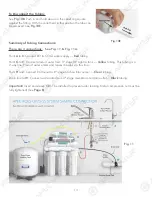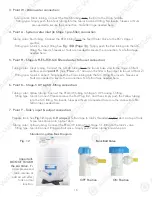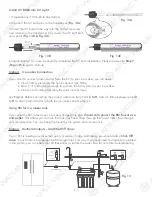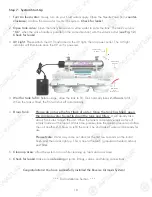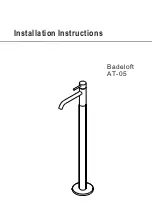
5
Fig. 4
Step 1: Feed Water Connection
The RO system must be connected to the COLD water supply only!
1. Locate the
Cold
water supply valve under the kitchen sink (the round or oblong handle on
the right side). Turn off the incoming cold water completely by turning the shut off handle
clockwise.
Note:
If the cold water shut off valve can not turn off the water, the main water supply
to the house must be shut off for the installation. Another option is to use a “self
piercing saddle valve” from APEC or from a local hardware store.
2.
Feed Water Adapter (1/2” to 3/8”):
See
Fig. 4.
The Feed Water Adapter comes with a sep-
arate Needle Valve. The Adapter goes inline onto your 1/2” or 3/8” cold water pipe. The Nee-
dle Valve portion screws onto the Adapter as shown in
Fig. 4A.
A.
1/2” x 3/8” Male-Female Water Supply Adapter
with O-ring.
B.
1/2” x 3/8” Female-Male Converter with O-ring.
C.
1/4” x 1/8” Male Needle Valve.
PART II. INSTALLING THE SYSTEM
Space:
Make sure there is sufficient space under the counter for installation (an area of about
17”L x
6”W x 18”H
for the system,
11”D x 18”H
for tank).
The RO system is best installed under the kitchen sink. But if that is not feasible you can install the system
anywhere where there is a cold water supply with sufficient water pressure for the chosen RO model, and
an outlet to drain off the drain water from the system.
Mounting:
No need to mount the RO system on the wall. The RO system can stand in the sink cabinet
without mounting, this makes future filter change easy and convenient. If you prefer to mount the system
to the wall, please make sure it can be taken down easily for filter replacement.
Feed Water:
RO systems are designed to treat both hard and soft water and can handle incoming TDS
levels up to 2,000 ppm.

















